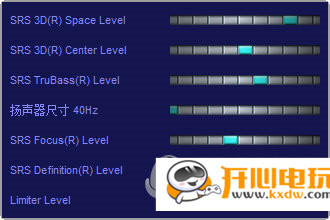

Cortex-A15 cores are stated to be at least 25% faster than Cortex-A9s, delivering at least 3.5 DMIPS/MHz compared to 2.5 DMPIS/MHz.
SRS AUDIO SANDBOX ANDROID EQUIVALENT SERIES
Unfortunately Tegra 3 only makes use of ARM Cortex-A9 cores, which are comparatively last-generation when they are going up against the likes of the (already-released) Qualcomm Snapdragon S4 and their Krait CPUs and the (upcoming) TI OMAP 5 series and Samsung Exynos 5xxx chipsets that contain ARM Cortex-A15 cores. The One X (left) next to last year's HTC Sensation This extra core is limited to just 500 MHz, but uses less power than any one of the four 1.5 GHz ARM Cortex-A9 cores so the main processing unit offloads low intensity tasks (such as music playing with the display off) to the companion core to save battery. Tegra 3 also comes with the touted "4-plus-1" core configuration that sees the system-on-a-chip outfitted with a fifth low-power "companion core".

Just on the RAM, one of the under-the-hood features that often gets overlooked is the fact that Tegra 3 raises the 32-bit single-channel LPDDR2 from 600 MHz to 1066 MHz for increased I/O speed. One of the big ones is that the HTC One X is the first smartphone to ship with a quad-core Tegra 3 chipset under the hood: it runs at 1.5 GHz across all four ARM Cortex-A9 cores, comes with the improved 12-core ULP GeForce GPU and 1 GB of RAM. HTC manages a couple of "firsts" for this device. VAT in the UK), which puts it in a similar price bracket as the recently released Sony Xperia S. They currently have the HTC One X available for AU$699 unlocked/off-contract (or £499.95 incl. As always, my HTC One X was provided by MobiCity and they continue to provide top-notch service. The HTC One X is already available on several phone carriers worldwide as a top-tier device, and will be launching in the United States in early May (albeit with slightly different specifications). Not to mention that it's packing the latest Android 4.0 with HTC's revamped Sense 4.0 UI. Along with the smaller One S and mid-range One V, HTC has grand plans to reclaim the high-end market with the HTC One X brand new design, powerful specifications and a full-featured camera all make the device, on paper, look like a compelling purchase. However, we're in 2012 now and it's a new era for HTC with their One Series devices. They followed up the Sensation with the likes of the Rezound, Sensation XE and XL but again the devices were not compelling enough to steal the market away from Samsung. They failed to release the HTC Sensation before the Samsung Galaxy S II was launched, and while the device was a solid dual-core performer it never reached the heights and success of the Galaxy. In 2011 it felt a bit like HTC was playing catch-up with Samsung.


 0 kommentar(er)
0 kommentar(er)
